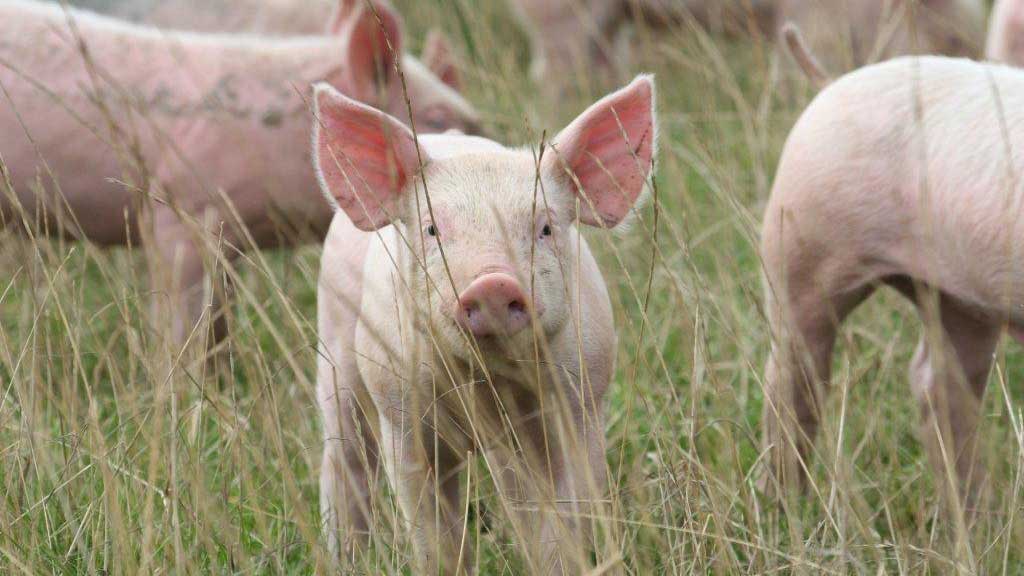
Module 3 – Genetic Improvement Part B
Thursday, 2 December 2021
In the PIC Breeding Program, goals are set for various traits, which are regularly re-evaluated according to market trends and customer requirements.
In the third part of the Genetics Technical Module we’re focusing on the Final three Key Points concerning Genetic Improvement; which are:
- The Breeding Program
- Measuring improvements
- Implementing genetic frontier technology
Breeding Program Strategy
In the PIC Breeding Program, goals are set for various traits, which are regularly re-evaluated according to market trends and customer requirements. The re-evaluations involve manipulating huge amounts of data that are being continuously updated. PIC ties together all this genetic information through PICTraq™ the international pig industry’s largest comprehensive genetic database. PICTraq™ ties together all pure line animal performance at every level, linking all animals in a family line to account for genetic performance while also keeping track of commercial performance. The PICTraq™ database allows PIC to make the most informed decisions regarding breeding values for important traits and commercial selection.
The PIC Breeding Program can be seen in Figure 1.
To assist producers in Australia to manage their on-farm breeding programs, PIC Australia has developed an innovative program called GMP or the Genetic Management Program. This program is only available in Australia and New Zealand to PIC clients. Both GMP and PICTraq™ will be discussed in greater detail in later outputs for this Technical Module.
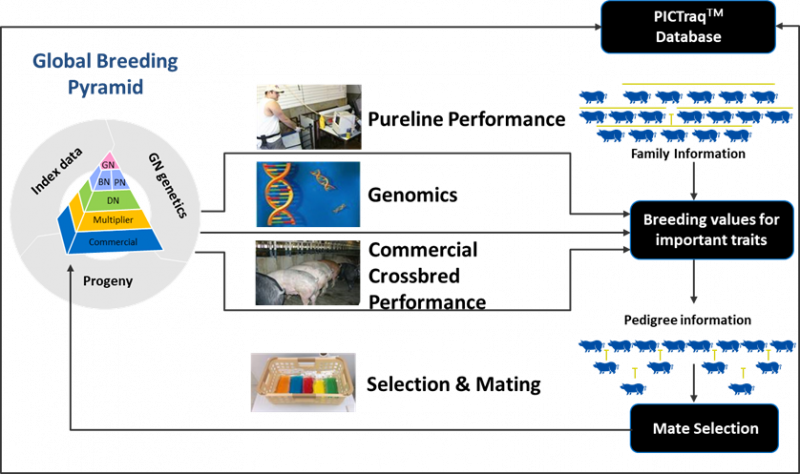
Measuring improvement
The PIC Breeding Program provides input to these programs through a feedback system of continual improvement and evaluation (Figure 2) with information from nucleus, multiplication and commercial herds pushing progress.
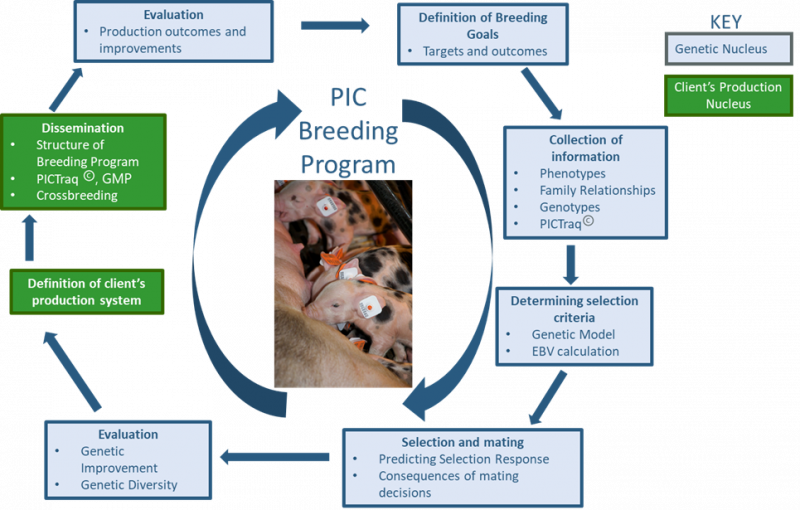
[1] Adapted from “Animal breeding and genetics for BSc Students” by K. Oldenbroek and L. van der Waai, 2014
Genetic improvement only occurs in stabilized pure lines with the benefits seen by the cross-mating of different lines in a commercial herd due to gene dissemination and the utilization of heterosis (also known as hybrid vigour). Heterosis can be explained as the increase in performance of the progeny in certain traits compared to the average of both parents in the same traits. Reproductive traits are usually more affected by heterosis than growth and carcass traits.
Genetic progress is made through selection of animals with superior genetic ability whether based on RBGSs, EBVs or indices. A breeding program’s genetic improvements is measured by how far the program has shifted the population averages across a herd across both single and multiple generations of selection (Figure 6). Genetic improvement should always be considered at the herd level i.e. improving the mean of the herd and not focusing on the individual animal.
The time it takes this superior genetic ability to be transferred from the top of the breeding pyramid and then throughout a client’s commercial farm is known as the Genetic Lag. Genetic Lag is dependent on the production management for a specific farm, so it does vary from farm-to-farm. Genetic Lag will be covered in greater detail in a future Australian Pig Improver, but the length of time can vary from 2-3 years, for a very efficient focused farm to greater than 10 years, for a farm system where the management differs greatly. Reducing Genetic Lag is one of the main keys to improving efficiencies on a commercial farm.
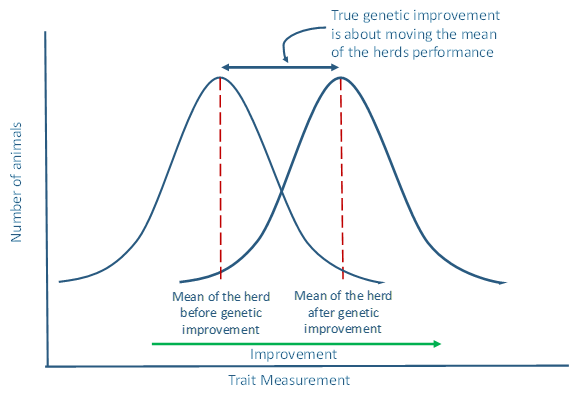
Implementing genetic frontier technology
PIC’s relationship-based genomic selection (RBGS) uses genotyping and statistical analysis to calculate how related animals are at the genetic level. RBGS increases the accuracy of evaluating progeny as the next generation of parents. RBGS is an additional tool used with the traditional BLUP genetic evaluation to increase the accuracy of EBVs of hard-to-improve traits such as Total Born. RBGS was introduced into Australia in 2017 and has accelerated the rate of change (Figure 4).
In PIC’s Genetic Nucleus farms at the top of the pyramid internationally and now also in Australia, there have been significant advancement in traits that directly improve the efficiency in the commercial product. This is a direct result of the introduction of RBGS and other on-going investments in technology. How rapidly these genetics are transferred and disseminated through a commercial farm varies from farm to farm and is dependent on farm management.
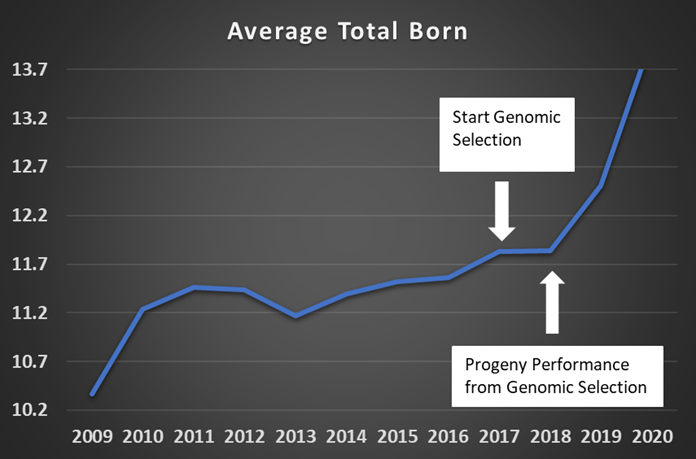
In the next Pig Improver for the Genetics Module we will be taking a look at Genetic Lag; what it is and how to best manage it in a commercial herd
References
Animal breeding and genetics for BSc Students” by K. Oldenbroek and L. van der Waai, 2014
Never Stop Improving-Genetic Improvement in the Pig Industry-North American Pig Improver
http://porkgateway.org/resource/introduction-to-swine-genetics-for-small-and-beginning-farmers/
http://porkgateway.org/resource/basic-concepts-of-genetic-improvement/
https://www.bestfunquiz.com/q/how-much-you-know-about-chromosomes-and-genes
https://ghr.nlm.nih.gov/primer/inheritance/heritability
The opinions, advice and information contained in this publication are offered by PIC Australia soley for informational purposes and it does not constitute professional, commercial or technical advice. While information contained in this publication has been formulated in good faith, the contents do not take account all the factors which need to be considered before putting the information into practice. Accordingly, no person should rely on anything contained herein as a substitute for specific advice.

